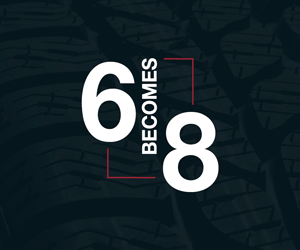
The Caboolture Butter Factory helped shine the light on the district
Published 11:09am 18 September 2018

 Words by Kylie Knight
Words by Kylie Knight
A catchy jingle and successful advertisement campaign turned Caboolture Fruit Yoghurt into a household name in the 1980s, but the history of the place it was once manufactured goes far further back.
It all began with butter in the Upper Caboolture district and a group of dissatisfied dairy farmers who wanted a better price for their milk.
In 1906, they formed a co-operative, and built the Caboolture Butter Factory, which opened the following year.
The factory was built on a 1.1ha site on the Caboolture River’s north bank to the left of the railway line. After two weeks of operation the factory had around 59 suppliers come on board with a whopping 114 in the coming three weeks. The factory was producing about 13 tonnes of butter by 1907, which escalated to 1148 tonnes by 1913.
Production was so busy that the factory was forced to open another two branch factories, one in Pomona in 1919 followed by Eumundi in 1920.
In 1936, when the original building was in a state of disrepair, it was determined that the Caboolture factory needed a revising.
A new brick building was designed, and the co-op was exploring the possibility of providing Brisbane with milk by 1937.
WWII resulted in a shortage of refrigerated shipping and a decrease in butter exports, which resulted in ramping up cheese production.
By the late 1960s, Caboolture had moved towards bulk milk including flavoured milk, starting with chocolate and strawberry, before adding coffee, lime, pineapple and vanilla to the factory's range.
It experimented with cottage cheese in 1970, but the following year moved production to Woodford as Caboolture Yoghurt began to take off, and the sales of cottage cheese waned. Yoghurt production began in 1969, with pot-set yoghurt trials.
John McAulay, a former board member, says Caboolture was the first to get into it, heating water in a bath and making yoghurt in cream cans during trials.
The acidophilus range was introduced in 1980, starting with natural before introducing honey as a sweetener to the fruit flavours.
A Brisbane marketing company created a jingle and television advertisement, and sales took off. “It put the Caboolture name on the map,” John says
The factory started custard production in 1982, supplied thick shake and sundae mix to Hungry Jacks and pizza cheese for Pizza Hut.
Rationalisation of the dairy industry began by the mid 1980s and in 1987 the Caboolture and Queensland Farmers Associations merged to become the Queensco Food Co-operative Association.
Caboolture factory’s market and flavoured milk operations were moved to Booval in 1989. It then specialised in yoghurt, custard, creamed rice, special mixes and cream.
A cross-border merger with Australian Co-operative Foods, also known as Dairyfarmers, in 1996 was the beginning of the end. The Caboolture factory closed in 1997 and the site is now home to Horizons College.
Read more history here
Related Stories
Top Stories

How "derelict" land became Anzac memorial
Residents in Wamuran are commemorating Anzac Day in person - and in print this year about how "derelict" land became a centrepiece of the town. ** FREE TO READ **


Popular Stories

Four-some Max strikes gold again
Max Cunningham, the former member of Grace Swim Club at Rothwell, had no break after his stunning performance at the Australian Age Championships. ** FREE TO READ **

Fun launch for new sports club
A new sports club will be launched in Morayfield this weekend to provide a “grass root base” for the future population of Caboolture West. ** FREE TO READ **

Dolphins: Earning ‘NRL powerhouse’ status
As the Dolphins’ second season in the NRL ramps up, we take a look at the numbers which prove they’re more than the ‘feel-good’ story of 2023 – they are a genuine powerhouse in the league













